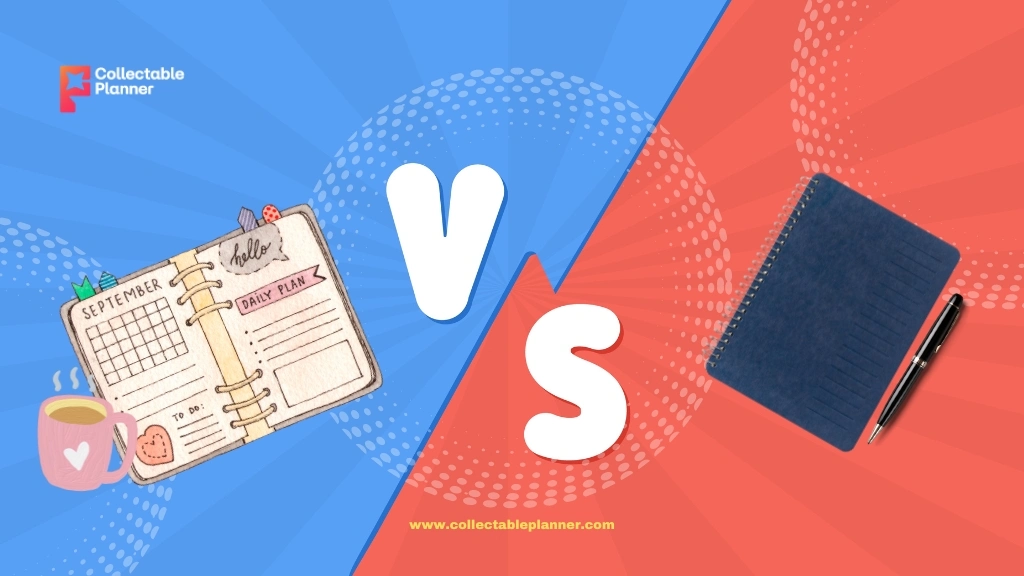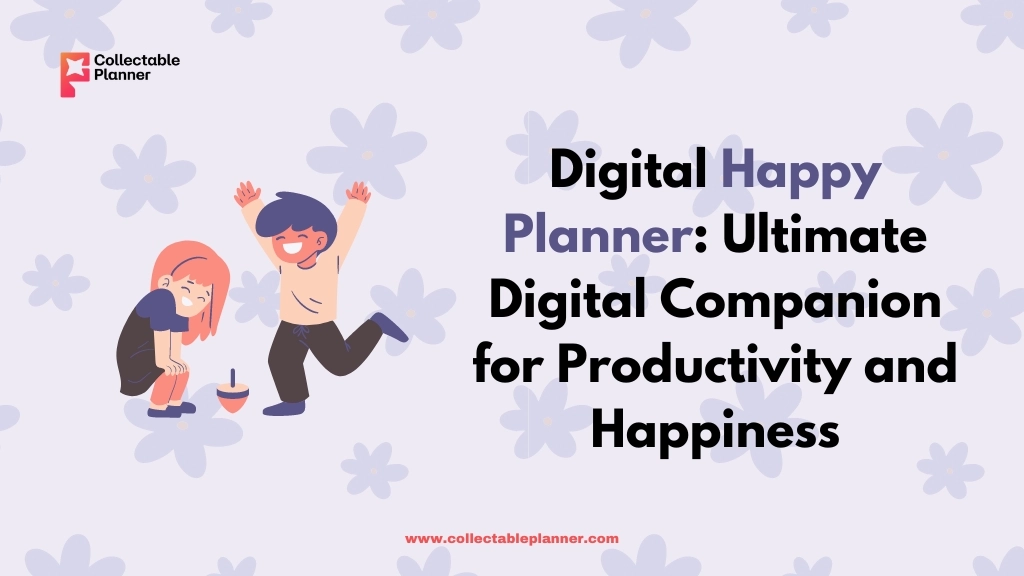Planning is an essential aspect of managing any business, regardless of its size or nature. It involves organizing and prioritizing tasks, setting goals and deadlines, and monitoring progress toward achieving those goals.
Effective planning can help businesses increase productivity, reduce stress, and achieve success in the long run. Planners are tools that aid in the planning process by providing a structured approach to managing tasks and goals.
Planners come in two types: Business Digital Planners and Traditional Planners. Traditional planners are physical, such as diaries and calendars, while digital planners are software-based and can be accessed through electronic devices.
Each type has unique features and benefits, and the choice between them depends on personal preferences and specific needs. We will explore these differences in detail in the following sections.
Digital Business Planners
A digital business planner is a software-based tool designed to help businesses and individuals manage their tasks, deadlines, and goals digitally. It typically includes features such as digital calendars, to-do lists, project management tools, reminders, note-taking, and collaboration features.
Digital business planners can be accessed through electronic devices such as smartphones, tablets, or computers, making it easy to manage and organize tasks on the go. The aim of digital business planners is to provide a more streamlined and efficient way to manage business operations and increase productivity.
Features and benefits of the best digital business planner
User-friendly interface: The digital business planner should have a simple and intuitive interface that is easy to navigate and use.
Multiple views: The planner should offer multiple views, such as daily, weekly, and monthly calendars, and a task list view to help users plan and prioritize their tasks effectively.
Customizability: The planner should allow users to customize their planner, including adding custom fields, color-coding, and different templates to suit individual needs.
Integration with other tools: The planner should integrate with other tools, such as email, project management software, and CRM systems, to enable seamless collaboration and data sharing.
Task management: The planner should have a comprehensive task management system that allows users to create, assign, and track tasks.
Goal tracking: The planner should have goal-tracking features that allow users to set and track their business goals over time.
Reminders and notifications: The planner should include reminders and notifications to ensure that users stay on top of their tasks and deadlines.
Reporting and analytics: The planner should provide analytics and reporting features that enable users to monitor their progress and identify areas for improvement.
Data security: The planner should prioritize data security and have robust encryption and authentication measures in place to protect sensitive business information.
Examples of digital planners available in the market
Trello – Trello is a project management tool that uses boards, lists, and cards to help users organize and prioritize tasks.
Asana – Asana is a task management tool that allows users to create tasks, assign them to team members, and track their progress.
Google Calendar – Google Calendar is a digital calendar tool that allows users to schedule appointments, set reminders, and view multiple calendars in one place.
Notion – Notion is an all-in-one workspace that includes a digital planner, project management tools, note-taking features, and more.
Todoist – Todoist is a task management tool that allows users to create and manage tasks, set reminders, and collaborate with team members.
Microsoft To-Do – Microsoft To-Do is a task management tool that integrates with other Microsoft products such as Outlook and OneNote.
Evernote – Evernote is a note-taking tool that allows users to create digital notes, save web pages, and organize information.
Monday.com – Monday.com is a project management tool that uses a visual board to help users organize and manage tasks.
Traditional Planners
Traditional business planners are physical planners made of paper that are used for managing tasks, schedules, and appointments. They provide a tangible and tactile way to plan and track progress and include features such as blank spaces for writing down tasks and appointments, monthly and weekly calendars, to-do lists, and space for notes. They are popular among professionals who prefer the feel of paper and pen over digital tools.
Features and Benefits of traditional planners
Portability: Traditional planners are easy to carry around, and you can take them with you wherever you go. This makes it easy to stay organized and keep track of your tasks and appointments.
No need for electricity: Traditional planners do not require electricity or an internet connection to work, making them a reliable tool that you can use even in areas with poor connectivity.
Customization: Traditional planners offer limited customization options, but you can still personalize your planner by choosing a design and layout that suits your preferences.
No learning curve: Unlike digital tools, traditional planners do not require any learning curve or technical skills to use. Anyone can use them right away without any training.
Factors to consider when choosing between digital and traditional planners
Personal preference: The choice between digital and traditional planners ultimately comes down to personal preference. Consider which type of planner you enjoy using the most and which one fits your lifestyle and work style.
Cost: Digital planners may have a lower upfront cost than traditional planners, but they may require ongoing subscription fees or software updates. Traditional planners, on the other hand, maybe more expensive upfront but have no ongoing costs.
Accessibility: Digital planners can be accessed from anywhere, while traditional planners require physical presence. Consider whether you need to access your planner on the go or if you can work from a physical planner in one location.
Customization: Digital planners offer more customization options than traditional planners, but some people may prefer the simplicity of a traditional planner.
Collaboration: If you work in a team, a digital planner may be more suitable as it allows for easy collaboration and sharing of information.
Reminder and notification: Digital planners come with reminder and notification features that can help keep you on track with your tasks and appointments. Traditional planners rely on you to remember and track your tasks and deadlines.
Advantages and disadvantages of digital planners
Advantages of digital planners:
- Accessibility from anywhere with an internet connection
- Wide range of customization options
- Reminder and notification features
- Easy collaboration with team members
- Often less expensive than traditional planners
- Integration with other digital tools, such as calendars and task management apps
- Quick and easy editing and rearranging of tasks and notes
- Ability to backup and sync data for security and convenience
Disadvantages of digital planners:
- Technical issues such as internet connectivity, software updates, or device malfunctions
- Distractions from notifications and other digital tools
Advantages and disadvantages of traditional planners
Advantages of traditional planners:
- Tactile experience
- No reliance on technology
- Fewer distractions
- Personalization
- Privacy
Disadvantages of traditional planners:
- Limited space for notes and appointments
- Less flexibility in editing and rearranging tasks
- Not easily accessible from anywhere
- Higher cost compared to digital planners
- Risk of losing or damaging physical planner
- Limited integration with other digital tools such as calendars and task management apps
Conclusion
In conclusion, the choice between digital and traditional planners boils down to personal preferences and needs. Digital planners provide flexibility, convenience, and easy access to information across multiple devices. They offer features like reminders, syncing, and customization options.
On the other hand, traditional planners offer a tangible and tactile experience, allowing for creativity, handwriting practice, and a break from screen time. They can be a great option for those who enjoy the feeling of physically writing things down. Ultimately, it may be beneficial to consider a combination of both approaches, using digital planners for on-the-go convenience and traditional planners for a more hands-on and personal touch.
Experimenting with both types of planners can help determine which one aligns best with individual organizational style and productivity preferences.




